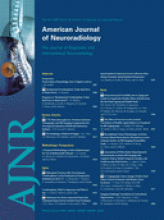We thank Dr Bonneville for his interest in our recent article1 and welcome the opportunity to clarify certain issues. We chose to report 8 patients with isolated cortical vein thrombosis (a very rare and difficult diagnosis usually requiring conventional angiography), to illustrate the value of T2* imaging for this diagnosis at the acute stage. On follow-up images, we also reported that the size of the magnetic susceptibility effect (MSE) was markedly reduced in all patients. We alerted the reader that an attenuated MSE could persist on follow-up MR imaging and that the sole presence of a venous MSE cannot be used in isolation for diagnosis of active isolated cortical venous thrombosis. We agree with Dr Bonneville that, at the subacute stage, venous thrombosis can become hyperintense on all sequences. However, these signal-intensity changes have poor diagnostic value for isolated cortical vein thrombosis. On Fig 1, the thrombosed cortical vein is only visible on T2*. On Fig 2, the thrombosed cortical vein is no longer detected. These data further emphasize that T2* showing the MSE is of key value for the acute diagnosis of isolated cortical vein thrombosis.
Reference
- 1.↵
- Copyright © American Society of Neuroradiology












